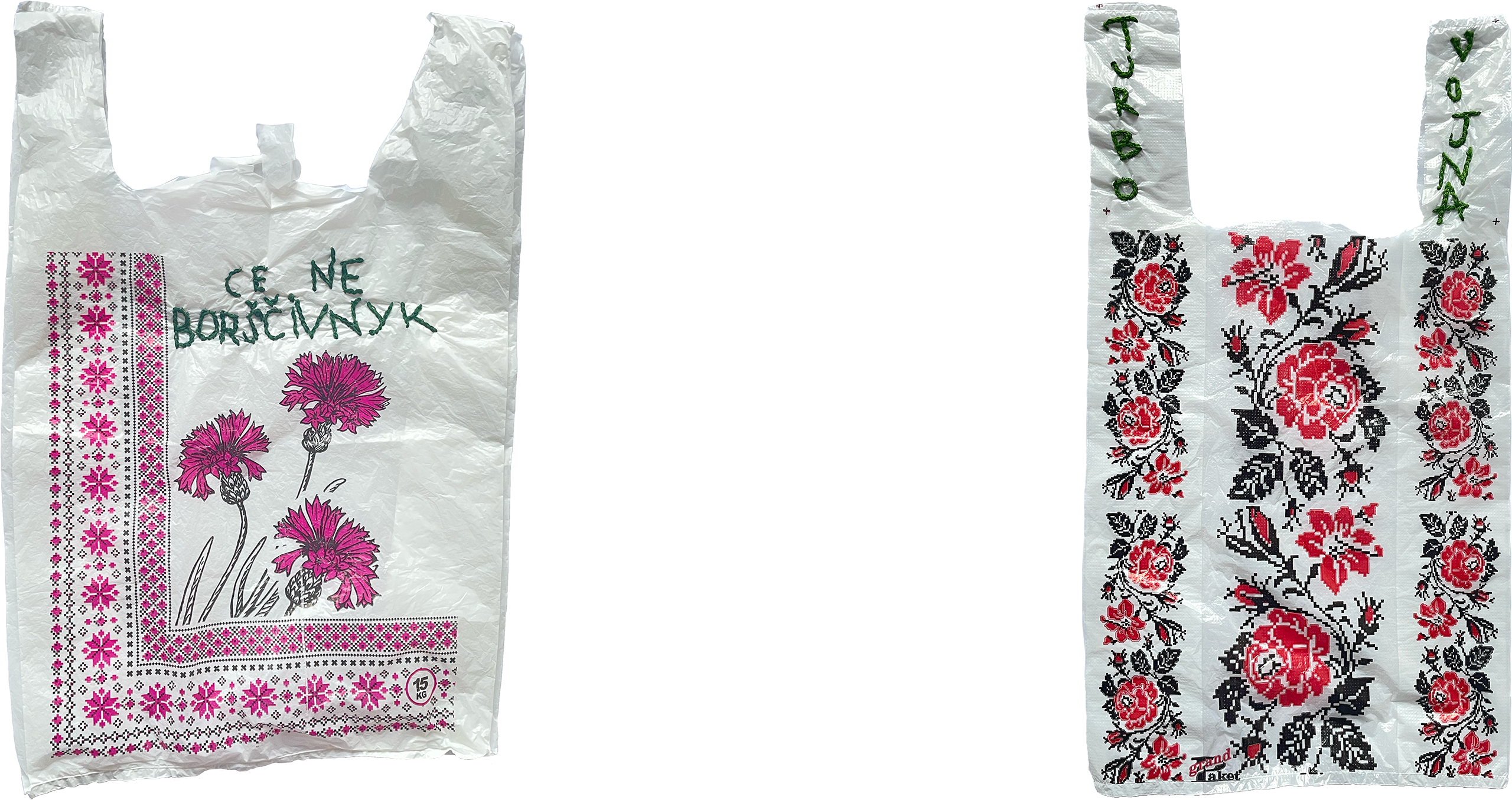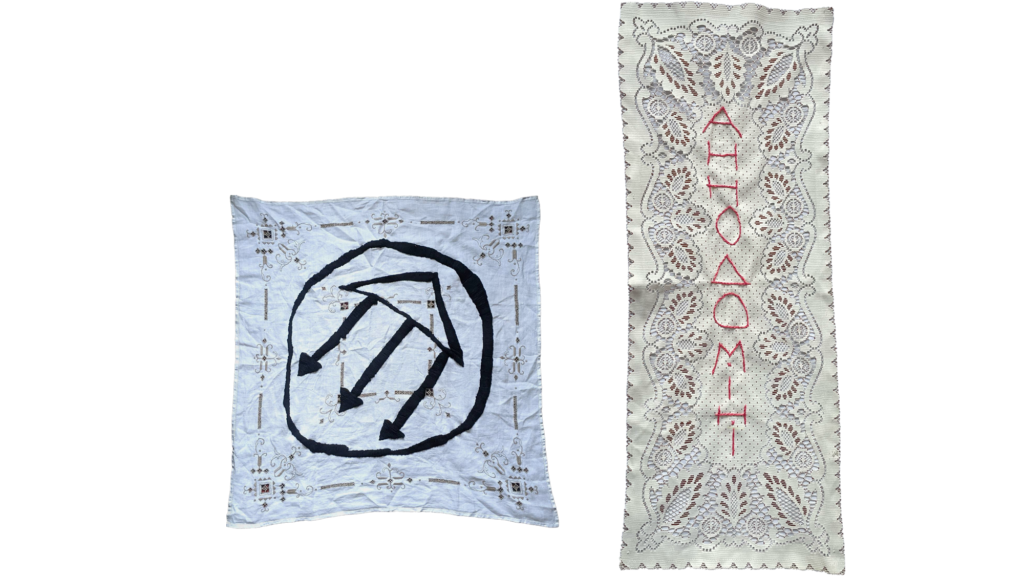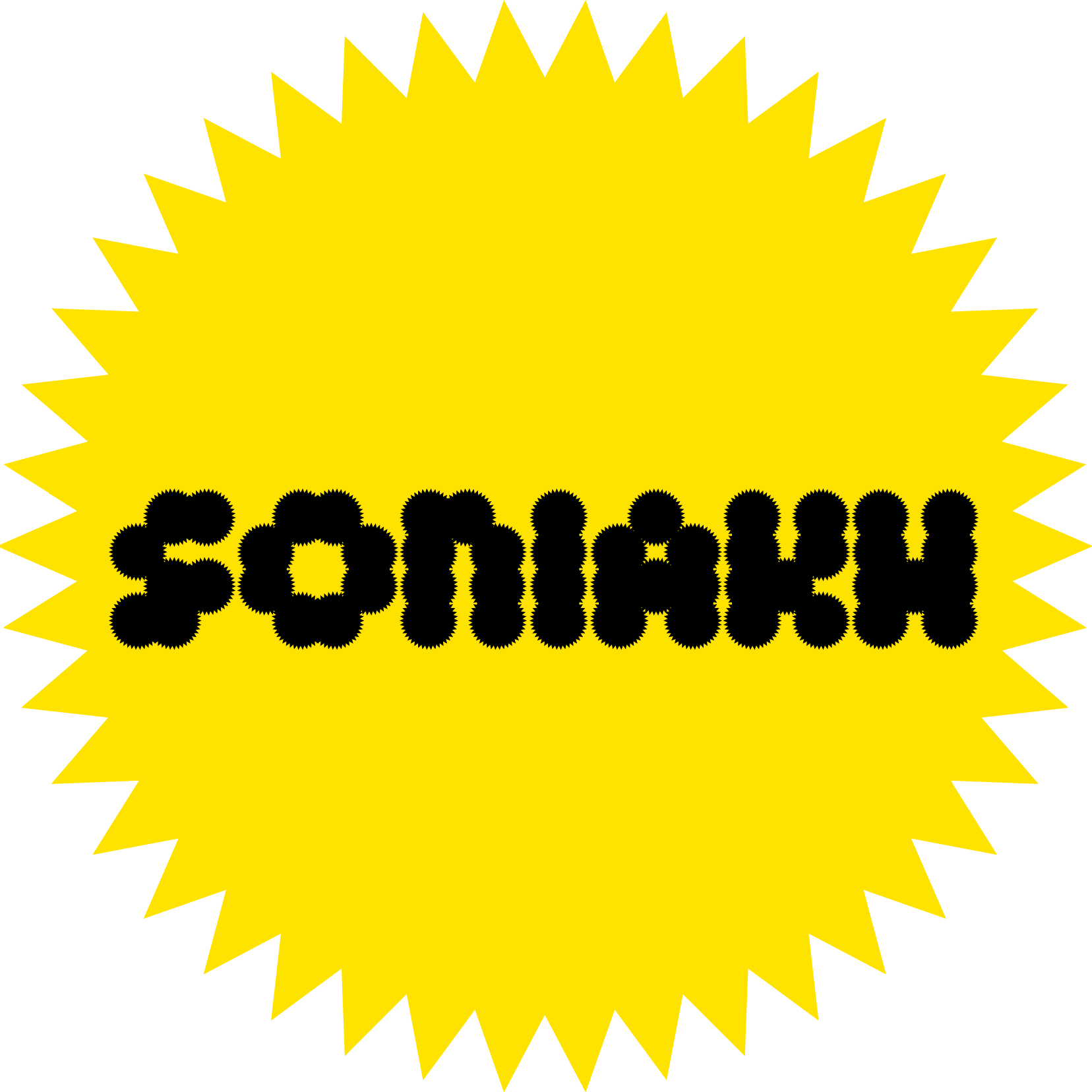Antifascist Antiquity


This series of works by Leo Trotsenko is a commentary on the diverse background of Ukrainian heritage as well as self-evolving, decolonizing approaches to Ukrainian language, visual art, music, history, and botany. The works were created after the start of Russia’s full-scale war in Ukraine, however the primary sources that set the direction for the creation of the series are drawn from the artist’s long-term interest in the presence of Greek culture in historical and contemporary Ukrainian public space, as well as in the history of the use of the Latin alphabet in Ukrainian language.
Ukrainian Latin, based on the Czech alphabet, or, inversely, Ukrainian Cyryllic used in the spelling of Latin words, populates the surfaces of Trotsenko’s latest embroidery pieces. The works express the artist’s sentiment toward the numerous unsuccessful attempts to legislate such spelling rules as an alternative to Ukraine’s Cyryllic standard, while also becoming a tool in the artist’s personal transition away from the use of Russian to the use of both spoken and written Ukrainian. The Ukrainian Latin alphabet has a long history and diverse tradition, which could be traced back to the 17th century, when first cases of Latin usage were recorded. One exemplary case in the campaign for Latinization was the proposal by Ukrainian linguists Maik Yohansen, Borys Tkachenko and Mykola Nakonechnyi at the Ukrainian Spelling Conference in Kharkiv in 1927, the results of the voting for which were greatly distorted by the Soviet press. The Central Committee of the Communist Party of the Ukraine condemned even the partial implementation of the Ukrainian Latin.
Two of the presented pieces contain inscriptions with this alphabet embroidered on plastic shopping bags—Ce Ne Borščivnyk [This Is Not a Heracleum] and Turbo Vojna [Turbo War]. Referring to the work by Rene Magritte The Treachery of Images or This Is Not a Pipe (1929), Trotsenko speaks of the invasive plant of poisonous Heracleum populating Ukrainian lands, just as the invading troops of the neighboring lands currently do. At the same time, we are witnessing invasive ‘turbo’ technologies trying to intrude into and mimic all surfaces of our lives, from commercializing aesthetics and marketing forms to war-related history and music. The emergence of turbo phenomena, including turbo-folk, turbo architecture, and turbo TV, took place in Serbia of the 1970s, and was substantially expanded in 1990s during the Yugoslav wars. More recently, Serbian artist Aleksandra Domanovic coined the term turbo sculpture to signify the emergent practice in ex-Yugoslav countries of creating sculptures of international pop stars who have no connection to local culture or histories.
The implicit connection to Greek culture that binds all the presented works together appears in the peice Antifascist Antiquity as antifascist arrows of Iron Front transformed into ancient Greek columns. The three arrows, initially symbolizing anti-fascism, anti-monarchism, and anti-communism have more recently been replenished by other anti movements and a broader anarchist direction. In Trotsenko’s work, contemporary pro-democratic movements come together with the classical democratic governing form originating from ancient Greece, a civilization whose cultural legacy, as well as ethnic descendants, still exist in some of the coastal regions of Ukraine. Correspondingly, the world is currently witnessing an anti-fascist fight for freedom, sovereignty, and democracy in contemporary Ukraine, a fight which similarly originated in a very distant past of oppression perpetrated by previous manifestations of contemporary imperial Russia.
Text by Milena Khomchenko.
Leo Trotsenko is an artist, musician, co-founder of the photo-initiative Periscope_ua since 2016. Based on cooperation with photographers, the initiative publishes the photo almanac Alternative Archeology, which explores Ukrainian cities through urban ethnography. As part of this project, he created one-day apartment exhibitions called Trace. In 2017, Trotsenko joined the self-organized artistic initiative DE NE DE, which explores urban transformations as a result of decommunization politics, and promotes a critical rethinking of the Soviet heritage. He holds a Bachelor’s degree in the History and Theory of Art from the Lviv National Academy of Arts. In 2018, he received a scholarship to study Contemporary Art at Kyiv Academy of Media Arts and studied at the Curatorial Platform of the PinchukArtCentre in Kyiv, 2018.
Published 21 March 2023
